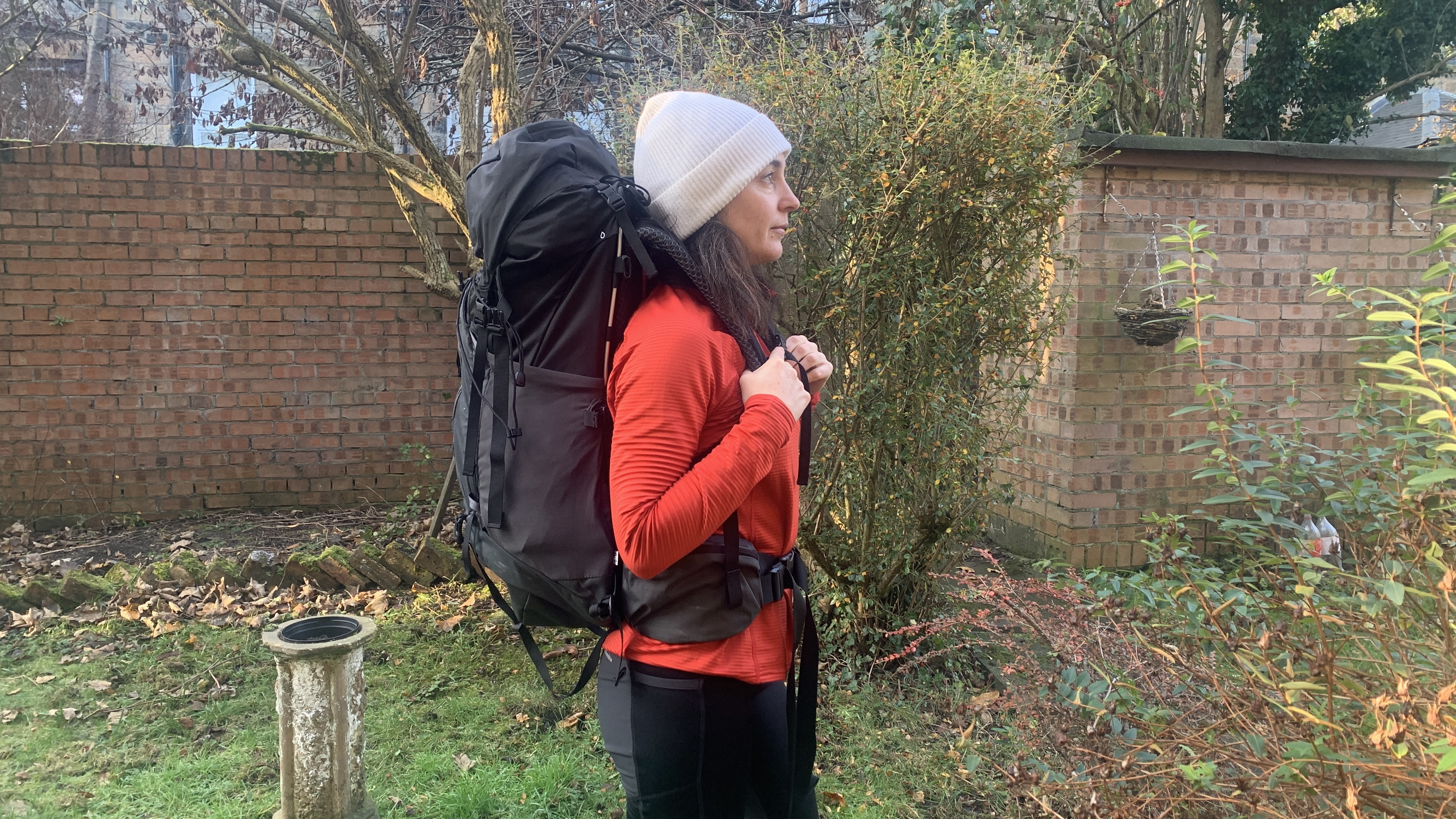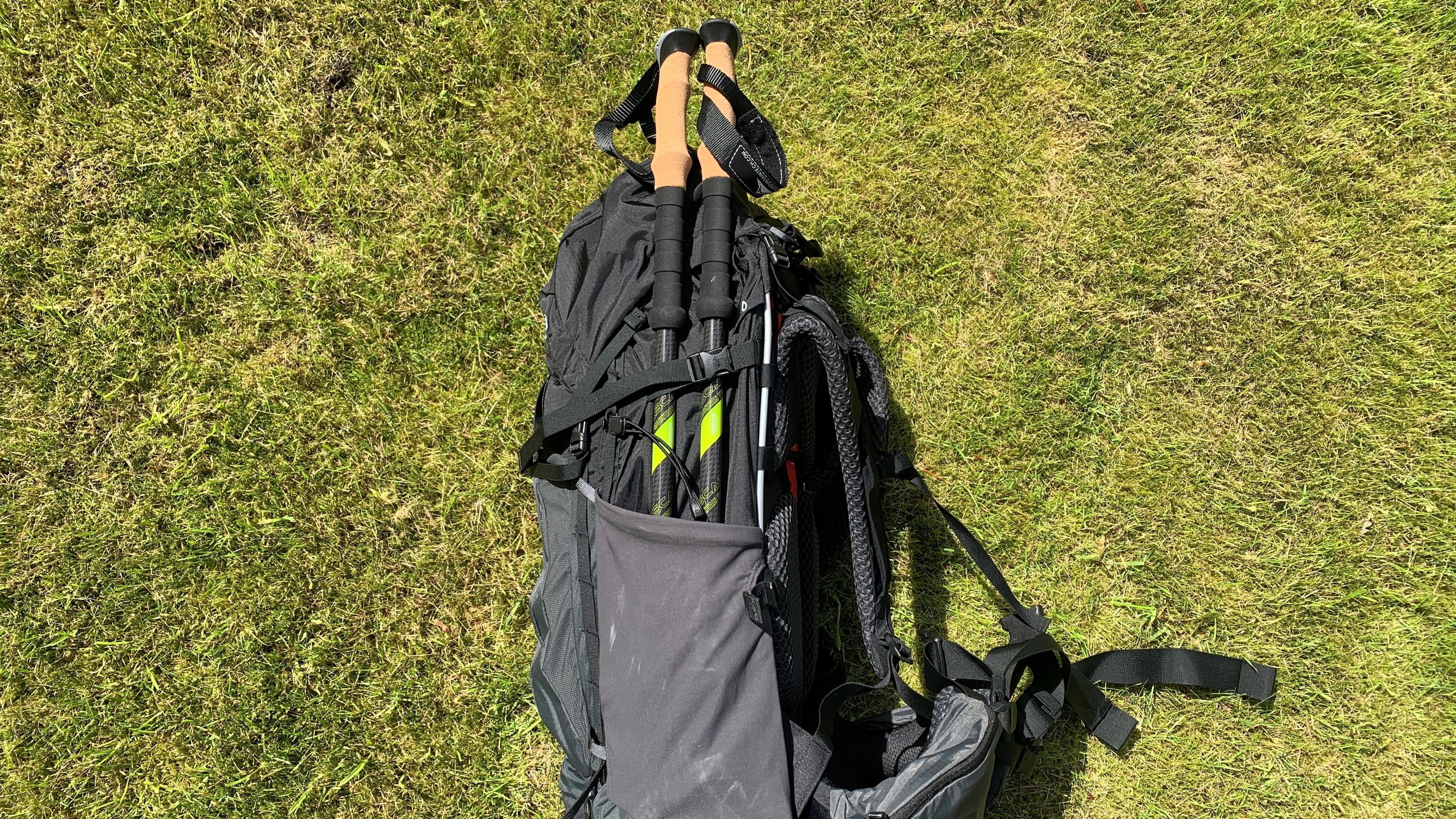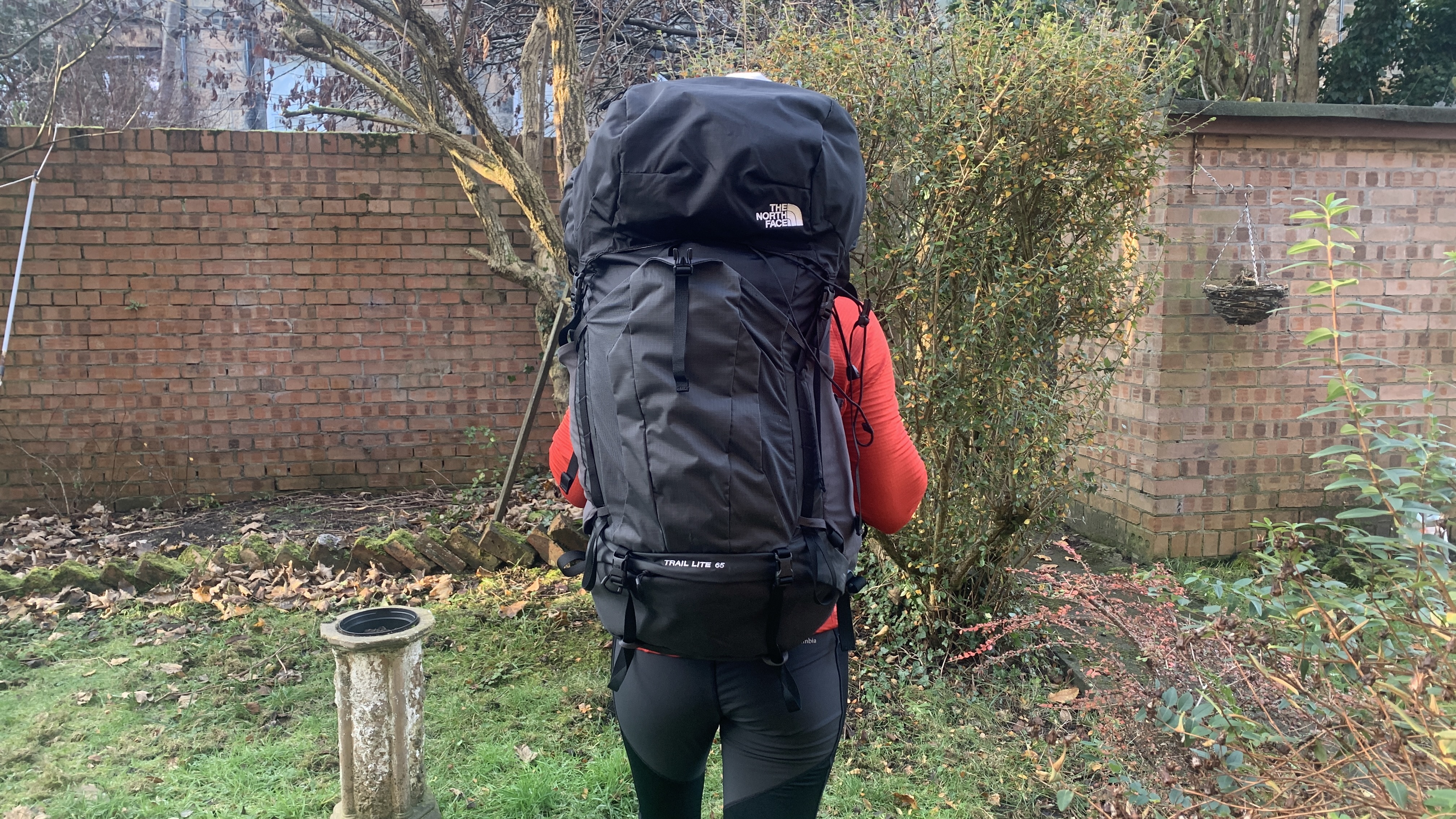Advnture Verdict
If you’re looking for a pack that’s capacious and padded enough for a multi-day adventure but doesn’t add too much weight, look no further than the Trail Lite
Pros
- +
Well-padded
- +
Roomy main compartment and lots of spacious pockets
- +
Top and bottom access
- +
Dedicated sleeping bag compartment
- +
Water-repellent DWR finish
- +
Great ventilation
- +
Attachments for trekking poles, ice axes and other gear
Cons
- -
Too big for shorter trips
- -
Hip belt may be a little uncomfortable for some bodies
- -
No rain cover
You can trust Advnture
The North Face Trail Lite Backpack 65L: first impressions
Like all camping gear, hiking backpacks are getting lighter and lighter, but sometimes with that loss in weight comes reduced functionality – not in this case. The Trail Light Backpack is part of The North Face’s Technical Hike collection and it lives up to its name, delivering a robust gear tote that can easily accommodate all of your gear for a longer trek or thru-hike, or even if you want to carry two people’s gear for a one night backpacking trip.
The spacious main compartment is easy to access from the top and the bottom, where there’s a dedicated compressible compartment for your sleeping bag. Extra real estate is found in giant, stretchy side pockets, a roomy stuff-it pocket that easily holds a waterproof jacket or down jacket, and a zipped lid compartment. The whole thing is really easy to pack and to access gear from.
• RRP: $240 / £240
• Weight: 3 lbs 14 oz / 1.78 kg (S/M)
• Capacity: 65L (50L also available)
• Sizes available: S/M, L/XL
• Dimensions: 65 x 33.5 x 30 cm/25.5 x 13 x 11.8 in
• Materials: 210D recycled nylon ripstop with non-PFC durable water-repellent (non-PFC DWR) finish
• Best use: Backpacking, thru-hiking
Once it’s all loaded up, you can secure it with a well padded hip belt that features two more zipped pockets for small gear like your phone and compass, and if you find the straps are flapping around you can tuck them behind the pockets. The hip belt, shoulder straps and back panel are all impressively padded and ventilated for a really comfortable carry in hot weather.
Other details include all the straps you need for carrying gear like an ice axe or trekking poles, a built-in hiking whistle and a DWR finish which will repel a light rain, though you’ll still need a rain cover for a downpour. It’s priced on the upper end of backpacks we’ve tested and the hip belt is so well-reinforced it might be a little uncomfortable for some people, but other than that, we can’t find much to complain about if you’re seeking a technical and lightweight backpack. The 65L is probably too much for a one-night trip, but there’s a 50L version available so don’t let that deter you.
The North Face Trail Lite Backpack 65L: in the field

I’ve been using the backpack throughout the summer months and into the fall this year for backpacking trips as well as using it on a press trip to Cairngorms National Park where I was traveling by train and staying in a hotel but needed loads of outdoor gear once I arrived. It’s part of The North Face’s Technical Hike range which I’ve tested several pieces from, some of which I found to be more technical than others.
Here’s how it performed:
Sizing and fit
I am 5’ 4” and I tested the S/M size which I think is great for me. It’s really a huge pack in terms of capacity but it doesn’t feel that way on, sitting up nicely on my hips and keeping the weight off my shoulders. My boyfriend is 5’11 and tried it on and it sit far too high on him so definitely make sure you size it right.
All the latest inspiration, tips and guides to help you plan your next Advnture!

Comfort
The straps and back panel are obviously built with comfort in mind, as they have loads of plush padding and ventilation, so I’ve had no issue with overheating during the warmer months. It sits up nice and high and does a great job of transferring the weight of my gear onto my hips, however I did have one issue with comfort and I’ve no idea if this is unique to my physiology.
Compared to other packs, the hip belt is really robust and when the pack is fully loaded, I find it actually hurts my hips a little, especially if I’ve been doing a lot of hiking and running in recent days and my upper glute meds are a little tender already. Like I said, this might just be me but I think it’s worth trying it on with weight just in case this happens to you too.
Storage capacity
The main compartment of this bag is a bit like a tardis, though that might be because I tend to travel light. I could easily fit all my gear for a couple of nights on the trail and carry the two-person tent plus the Trangia stove when hiking with my boyfriend, so it occurs to me that this can either be a solution for a longer trek or if you and a partner want to carry most of your gear in one pack.
There’s a dedicated sleeping bag compartment at the bottom which you can reach via a zipped opening that’s really handy to keep your sleeping bag stowed and safe, however you can also remove the divider and just make the main compartment bigger with the ability to access it from both the top and bottom.
In addition to the main compartment, the side pockets are seriously roomy and my Contigo Cortland Autoseal water bottle completely disappears into them. They’re also ample for gear that rolls up like my sleeping bag liner. When I’m hiking in dry weather, I use the roomy stuff-it pocket at the front for my waterproofs which opens up even more room. The lid pocket holds tons of gear and is removable.
Oh, and there are two zipped pockets on the hip belt that can easily carry my phone and even gloves. Basically, it’s the first time I’ve found myself with room to spare on a backpacking trip.
Fastenings and other features
All the fastenings and straps on this backpack are straightforward and easy to use, which is ideal whether I’m packing for a trip or adjusting it on the go.
This backpack has all the straps you need for good compression and carrying gear, which I actually wrote about in an article titled What are all the loops on your backpack for? In addition, there are hidden compartments behind the hip belt pockets where I can tuck away the annoying flappy straps, and it is treated with DWR so it’s fine for a light rain. That said, I do wish it came with a rain cover for the Scottish weather.
Weight
Compared to my Sierra Designs backpack, this one feels a little heavy, but compared to others we’ve tested in a similar size range, it’s actually on the lighter end of things and it’s especially light when you consider how much storage and padding you get.
The North Face Trail Lite Backpack 65L: the bottom line
If you’re seeking a technical bag with loads of room for bigger expeditions that’s comfortable and reasonably light, this backpack is definitely worth a look. It’s probably too much for shorter trips, but there is a smaller size available. That said, if you're seeking something more versatile and lighter, check out the Sierra Designs Flex Capacitor 40-60L which both shrinks and grows and weighs just over two pounds empty.
Julia Clarke is a staff writer for Advnture.com and the author of the book Restorative Yoga for Beginners. She loves to explore mountains on foot, bike, skis and belay and then recover on the the yoga mat. Julia graduated with a degree in journalism in 2004 and spent eight years working as a radio presenter in Kansas City, Vermont, Boston and New York City before discovering the joys of the Rocky Mountains. She then detoured west to Colorado and enjoyed 11 years teaching yoga in Vail before returning to her hometown of Glasgow, Scotland in 2020 to focus on family and writing.


